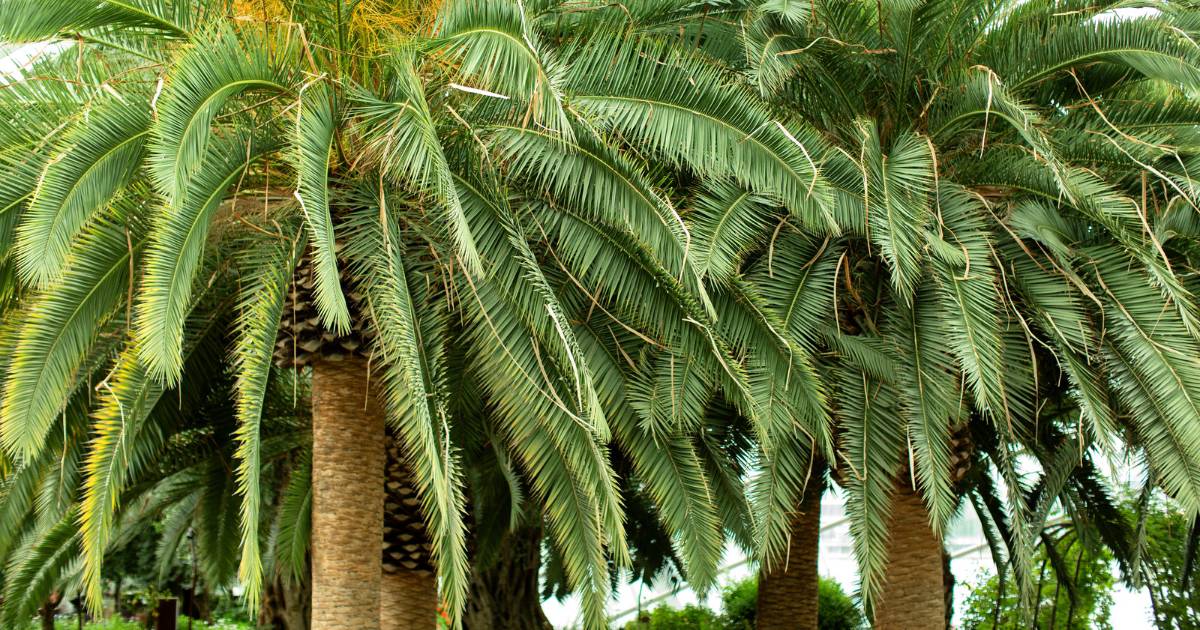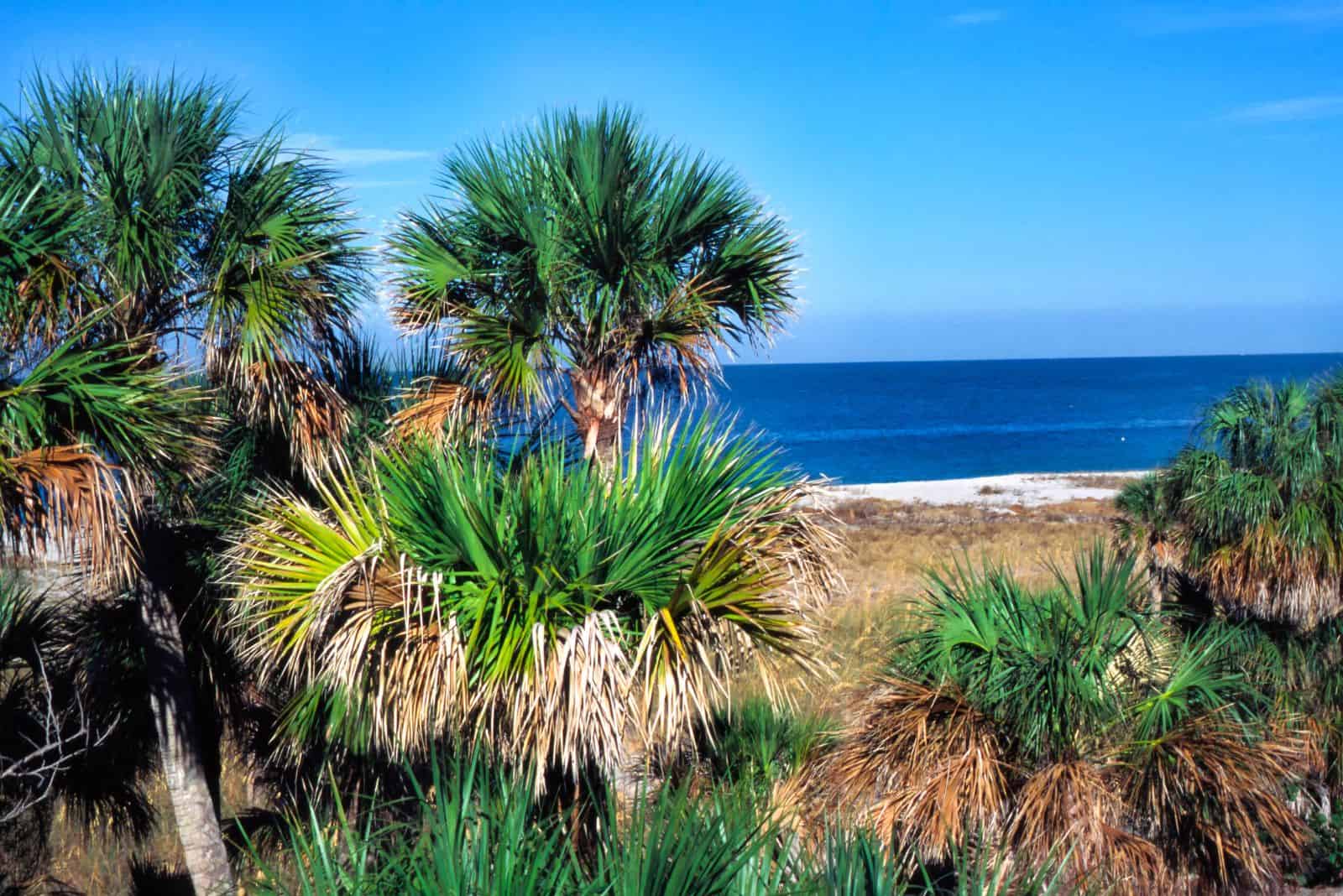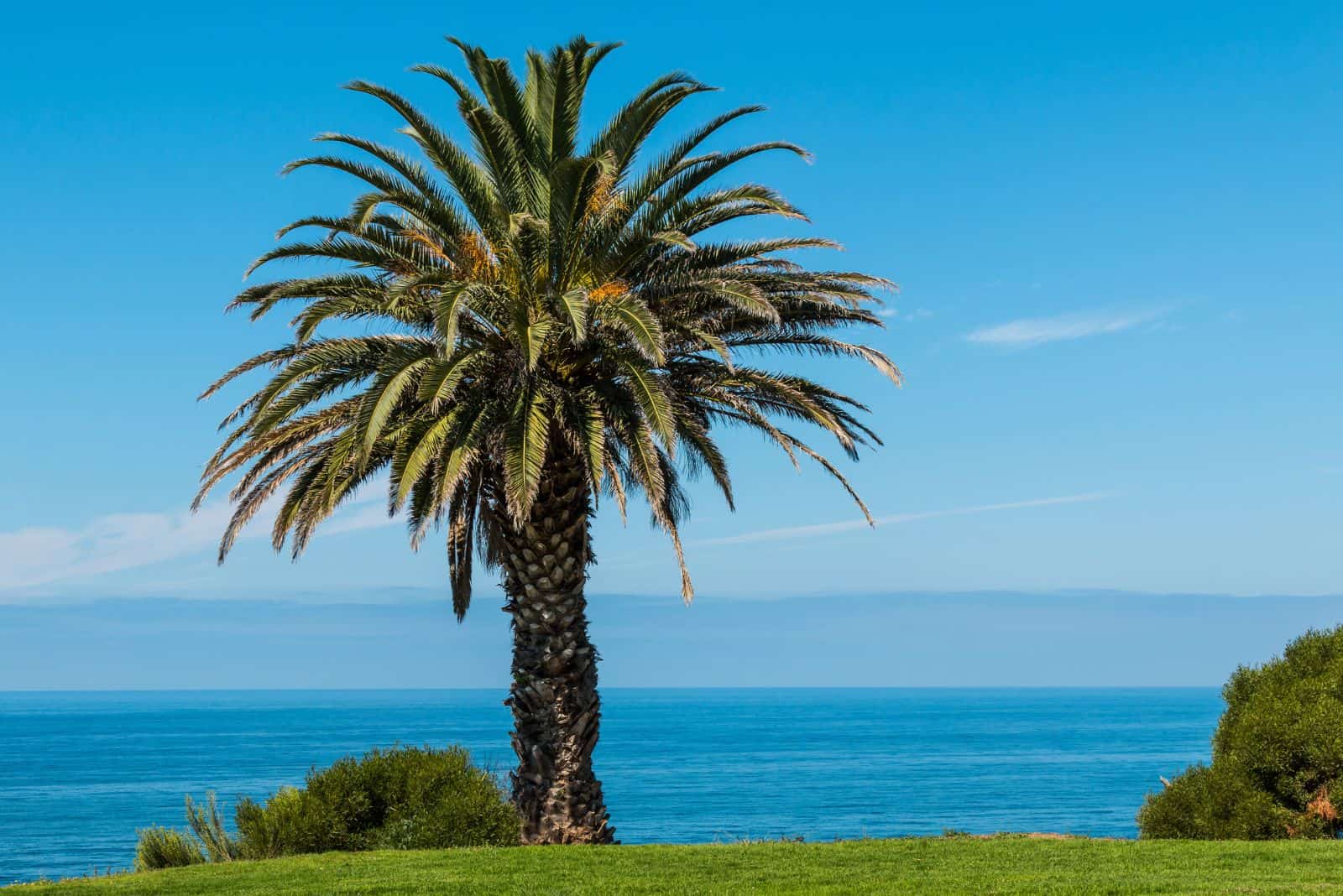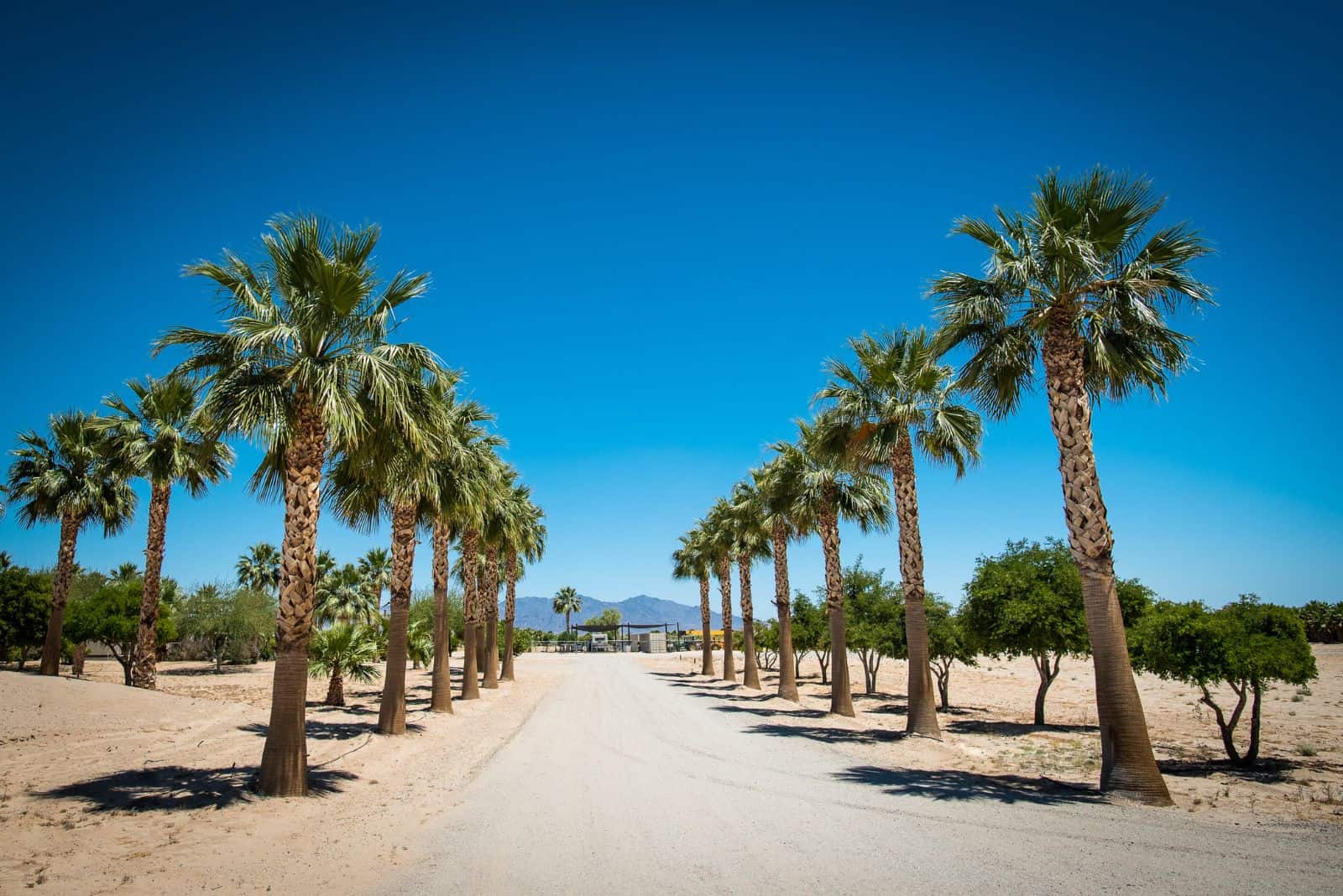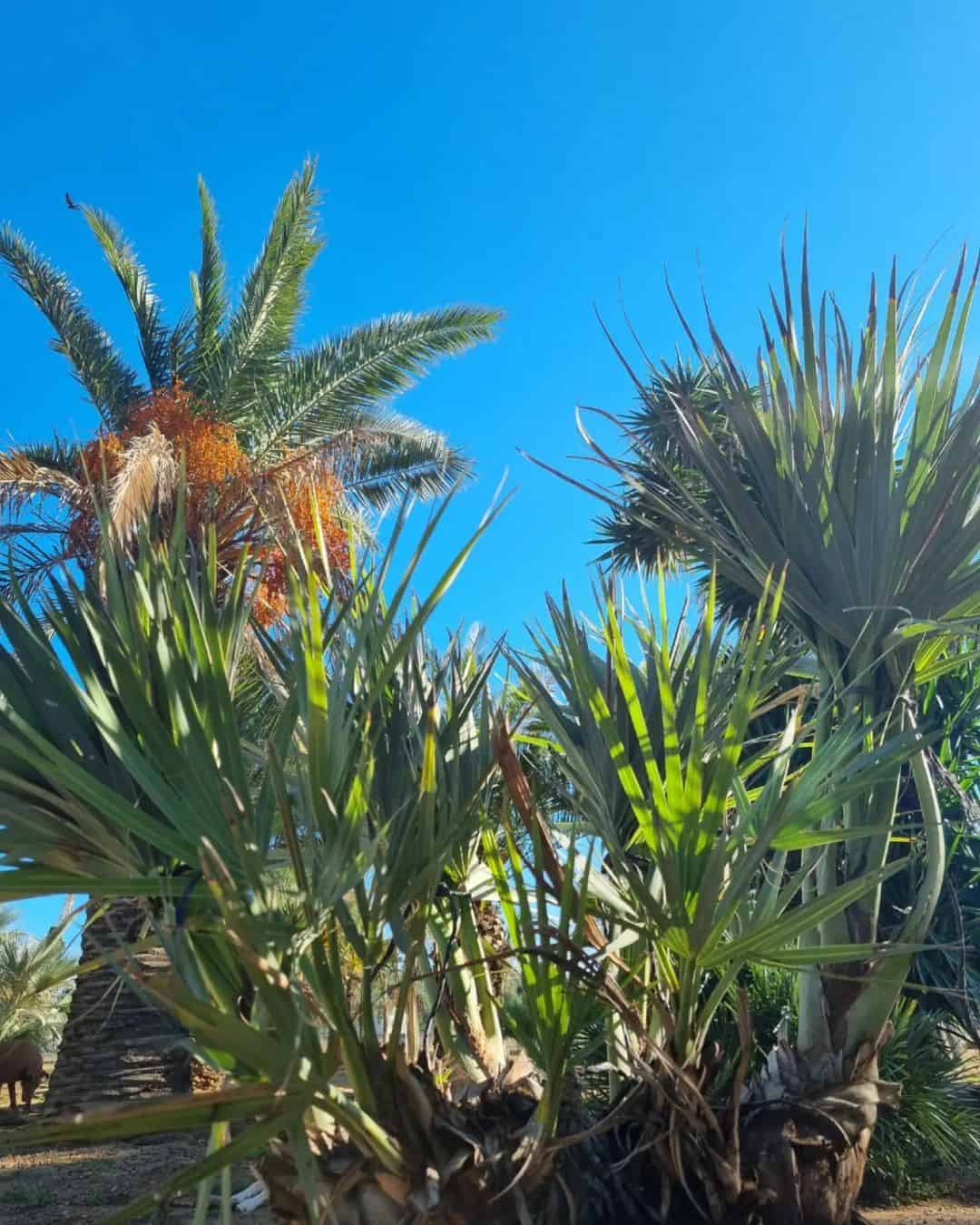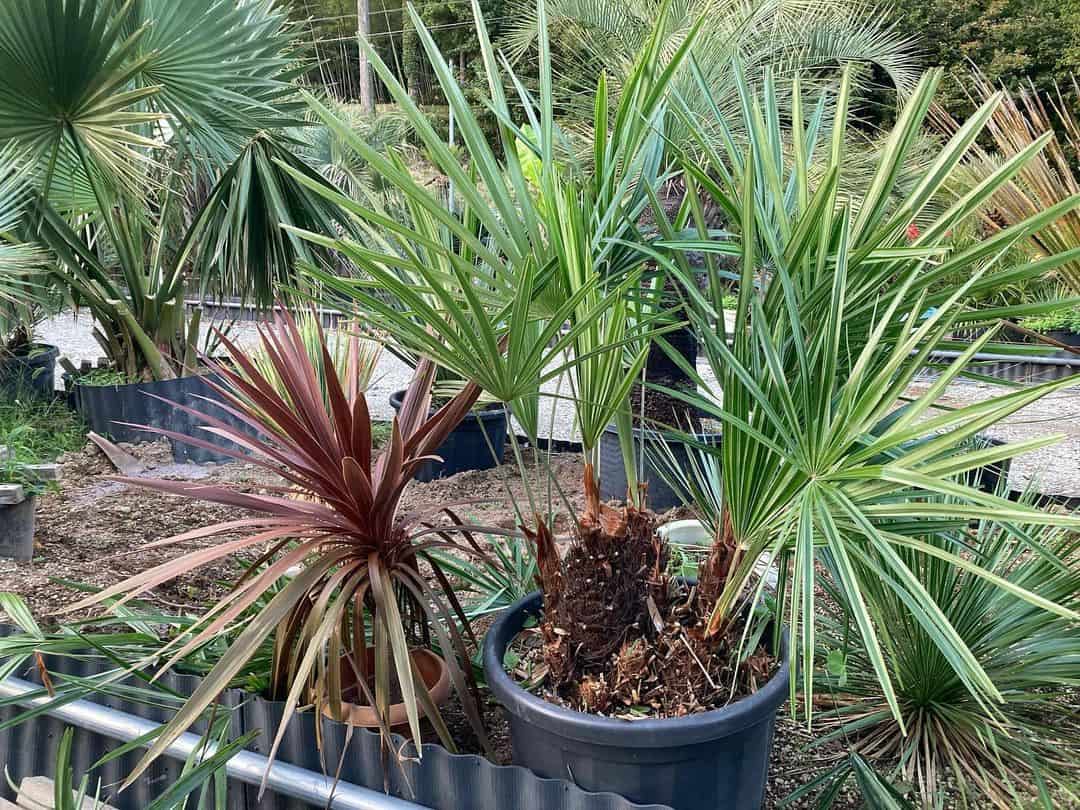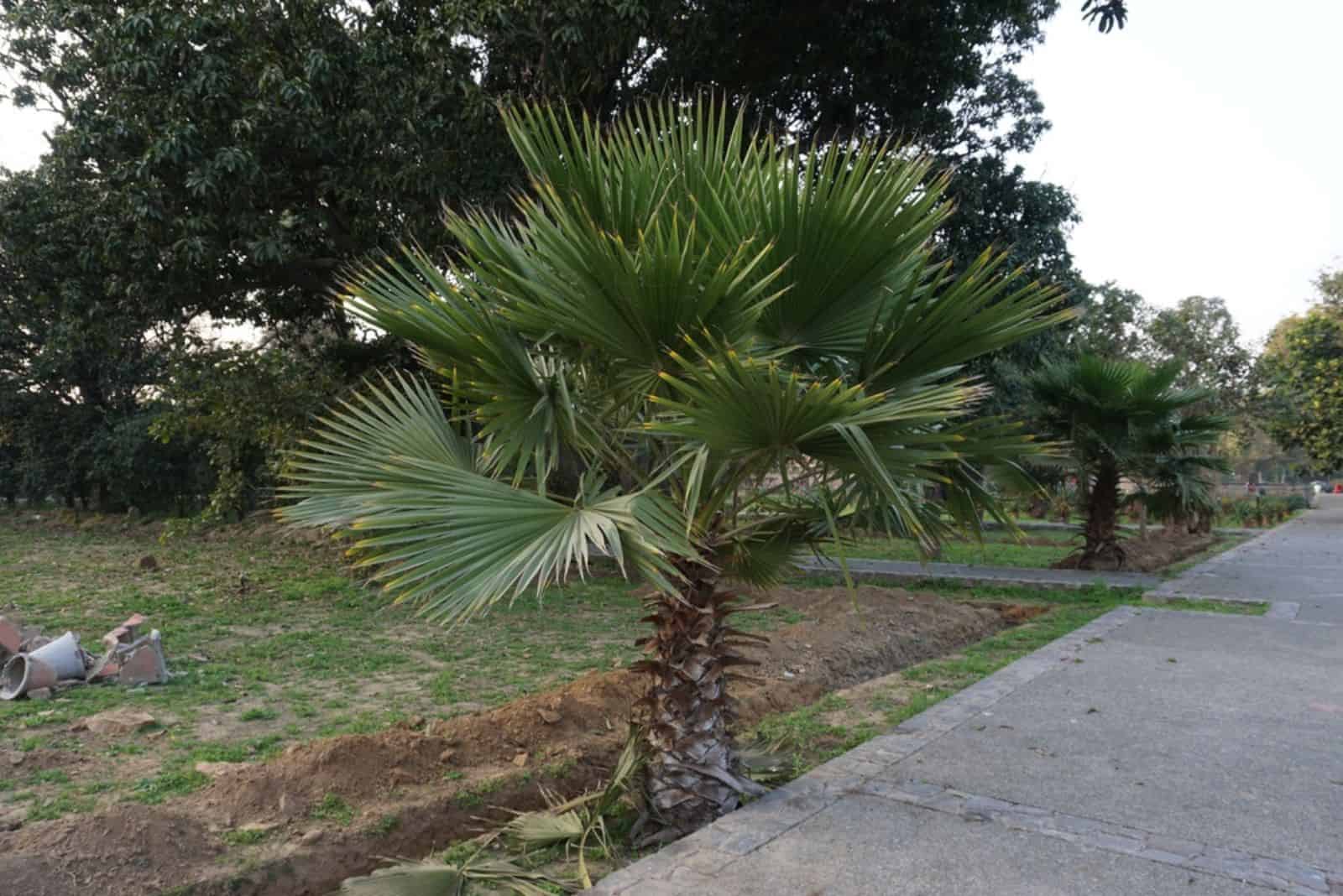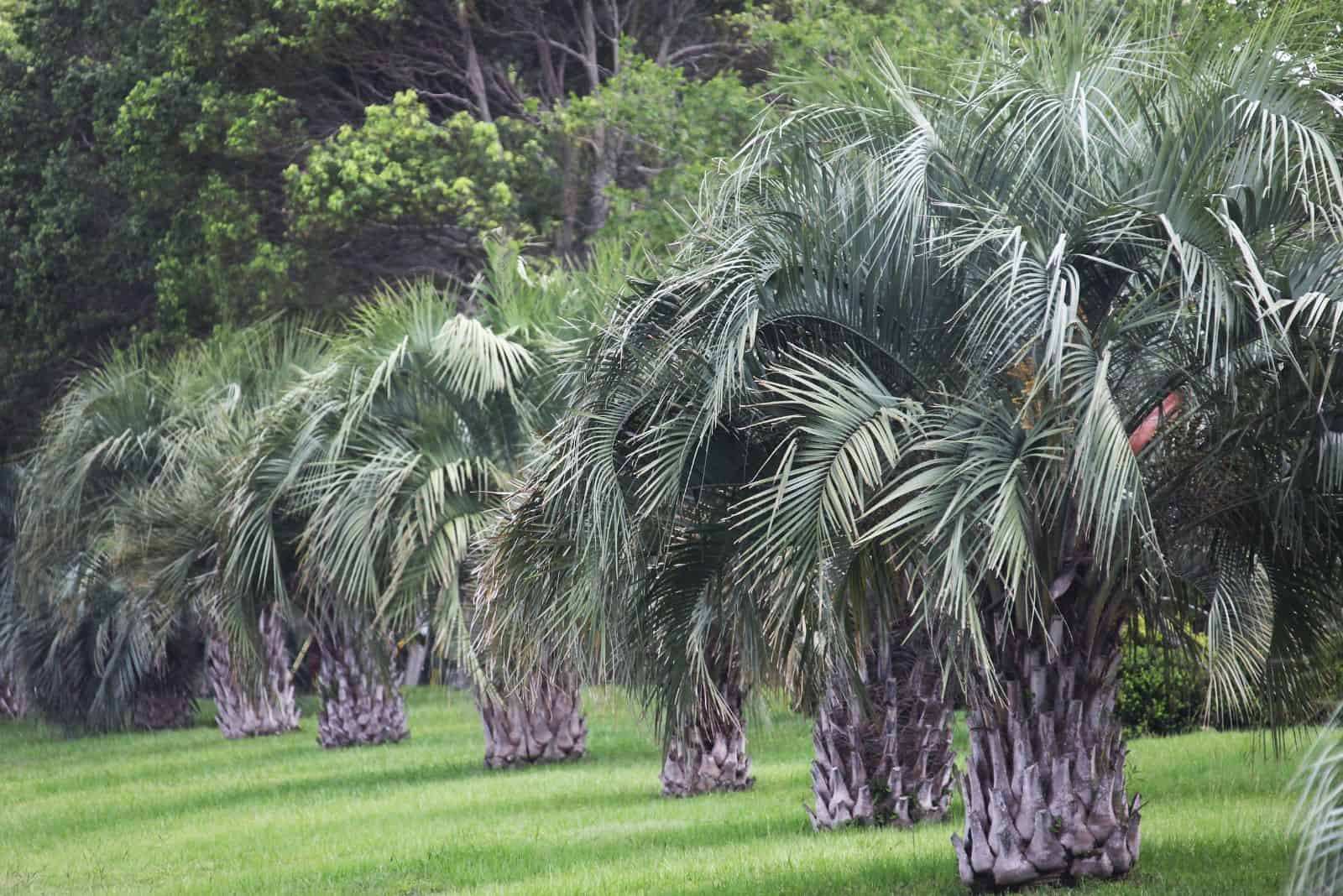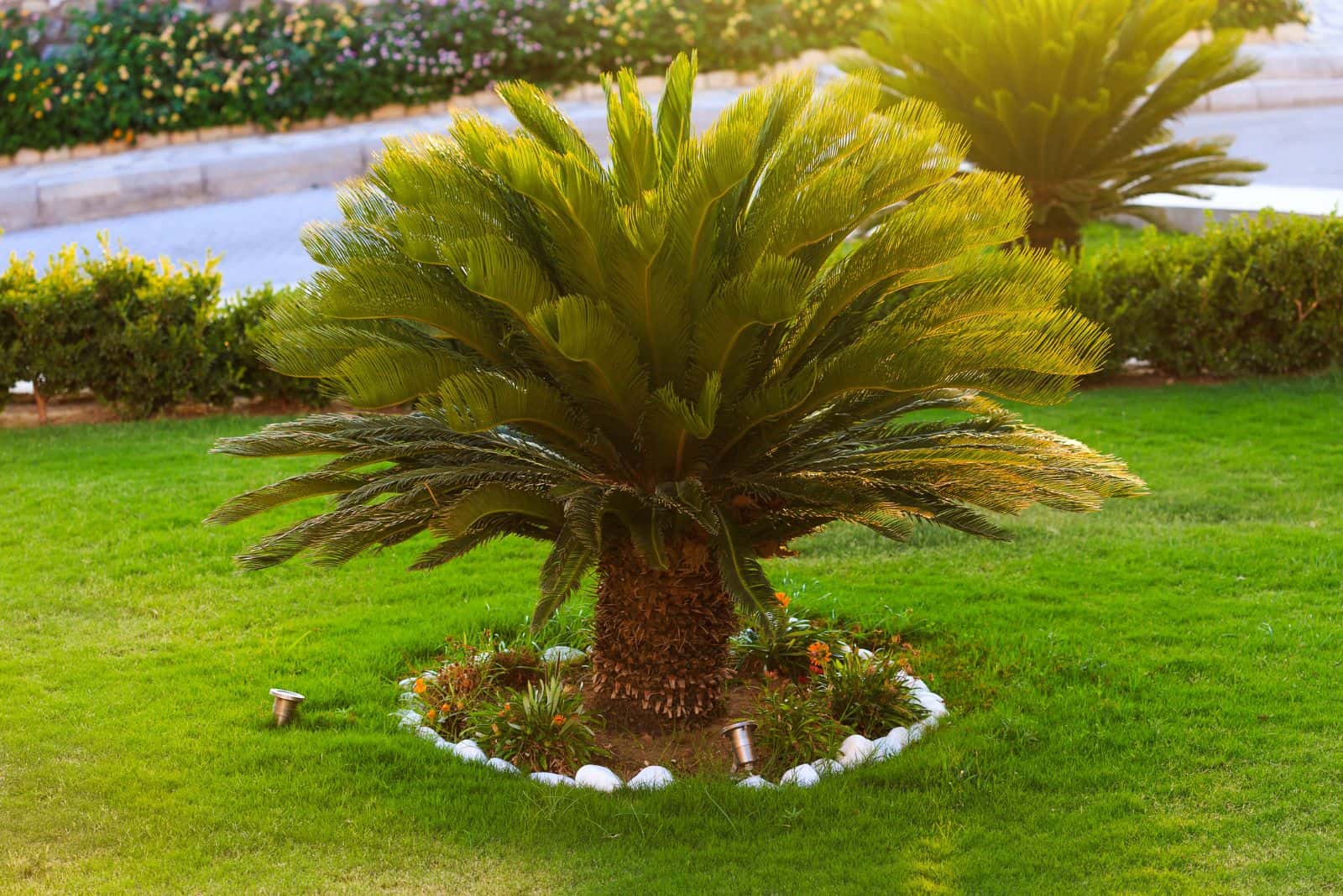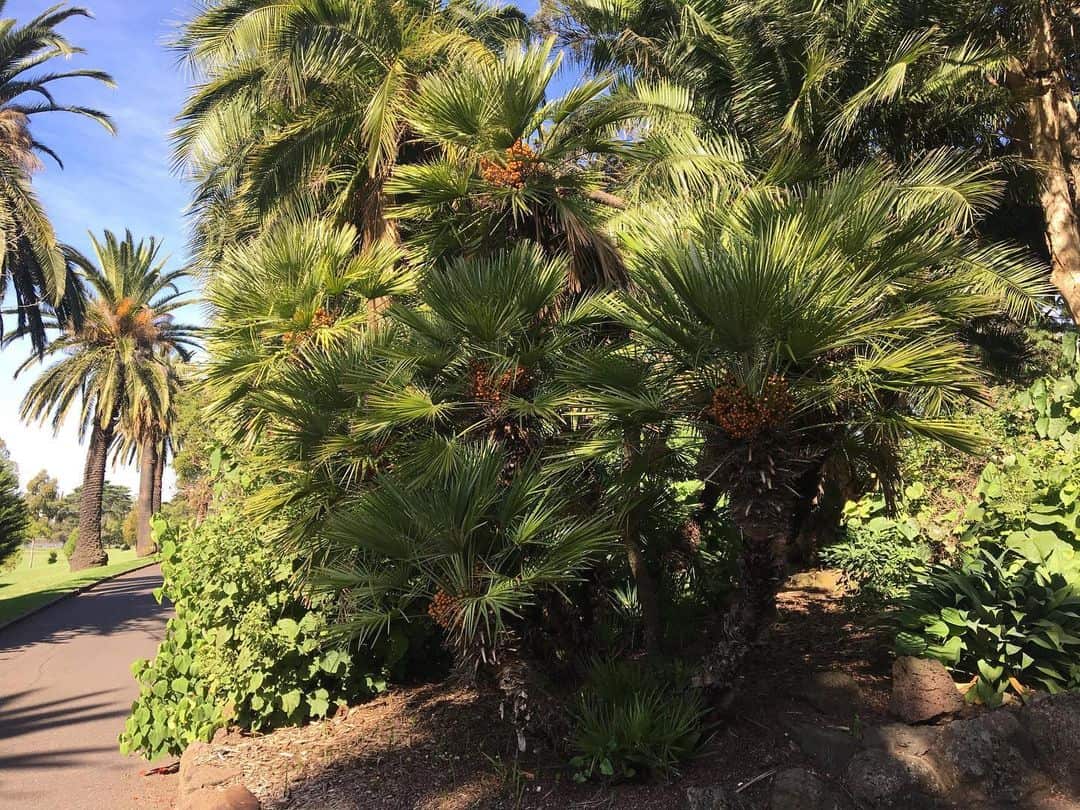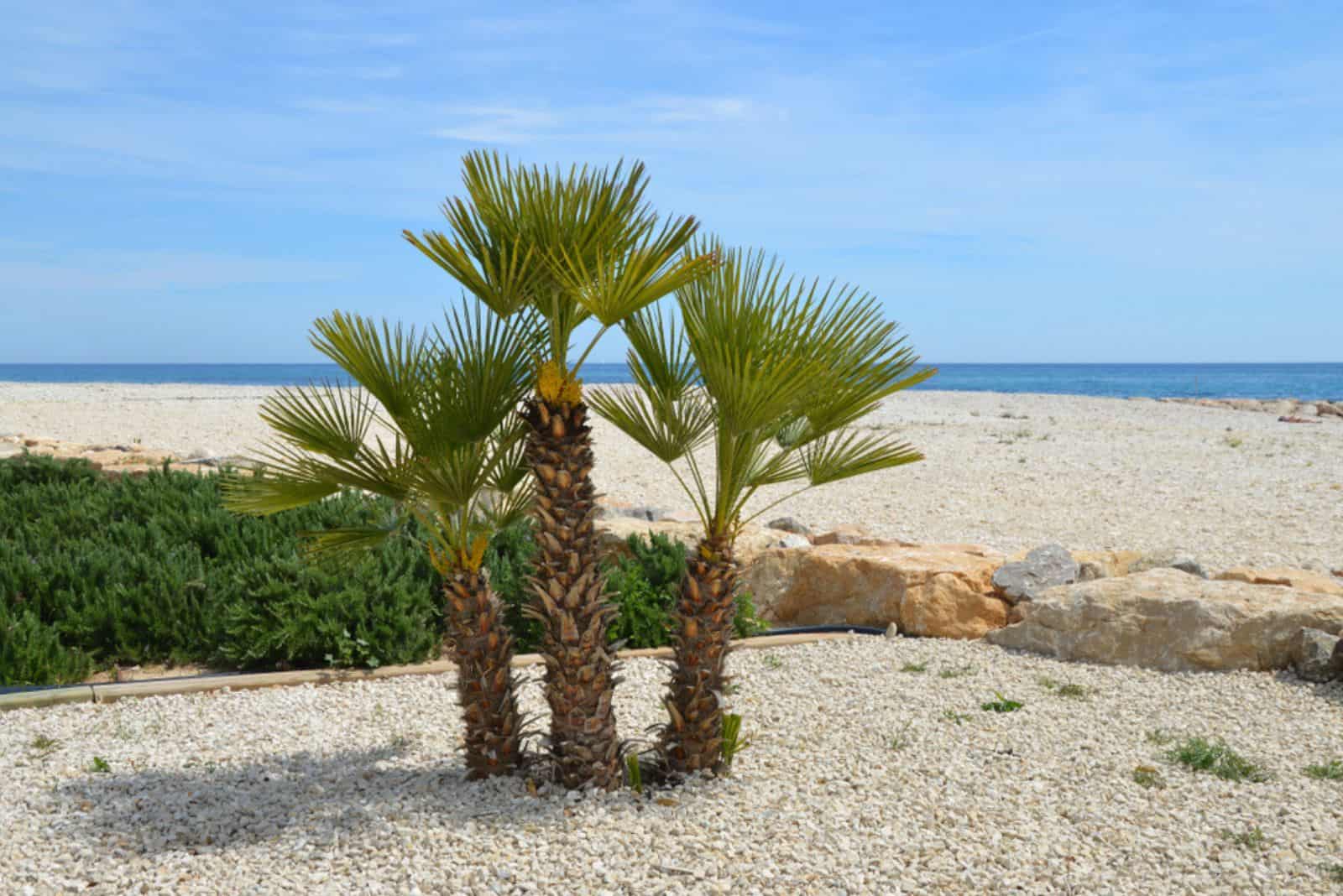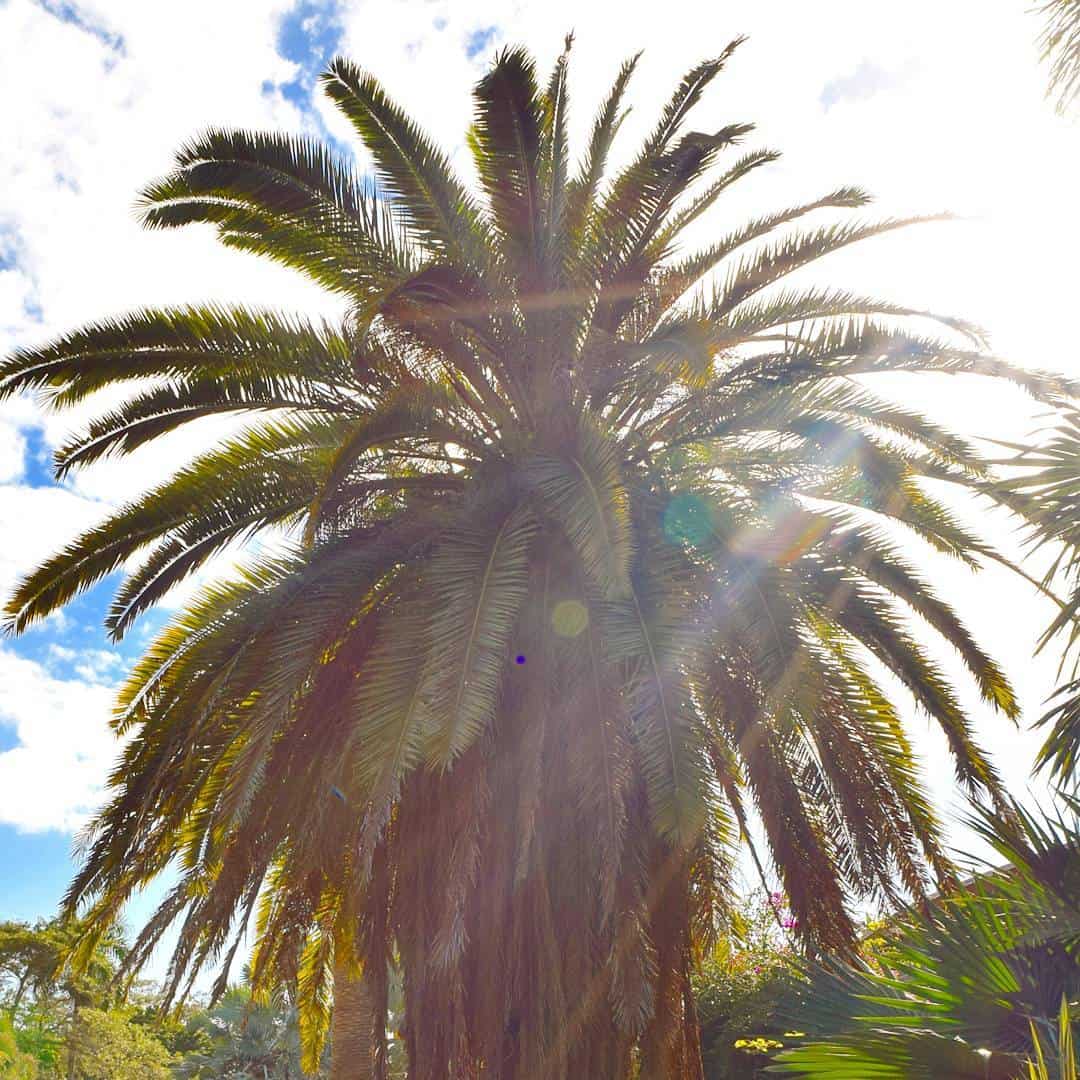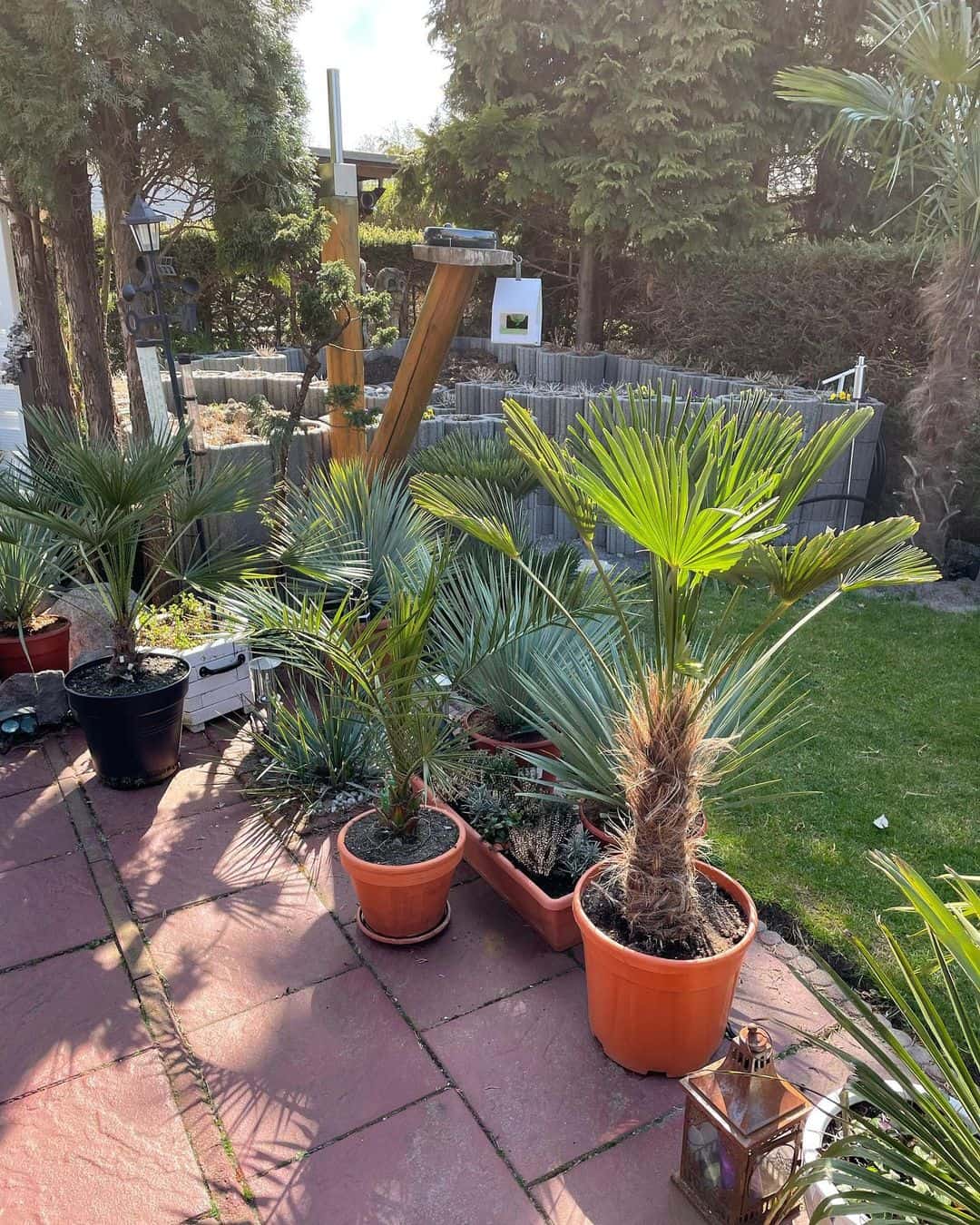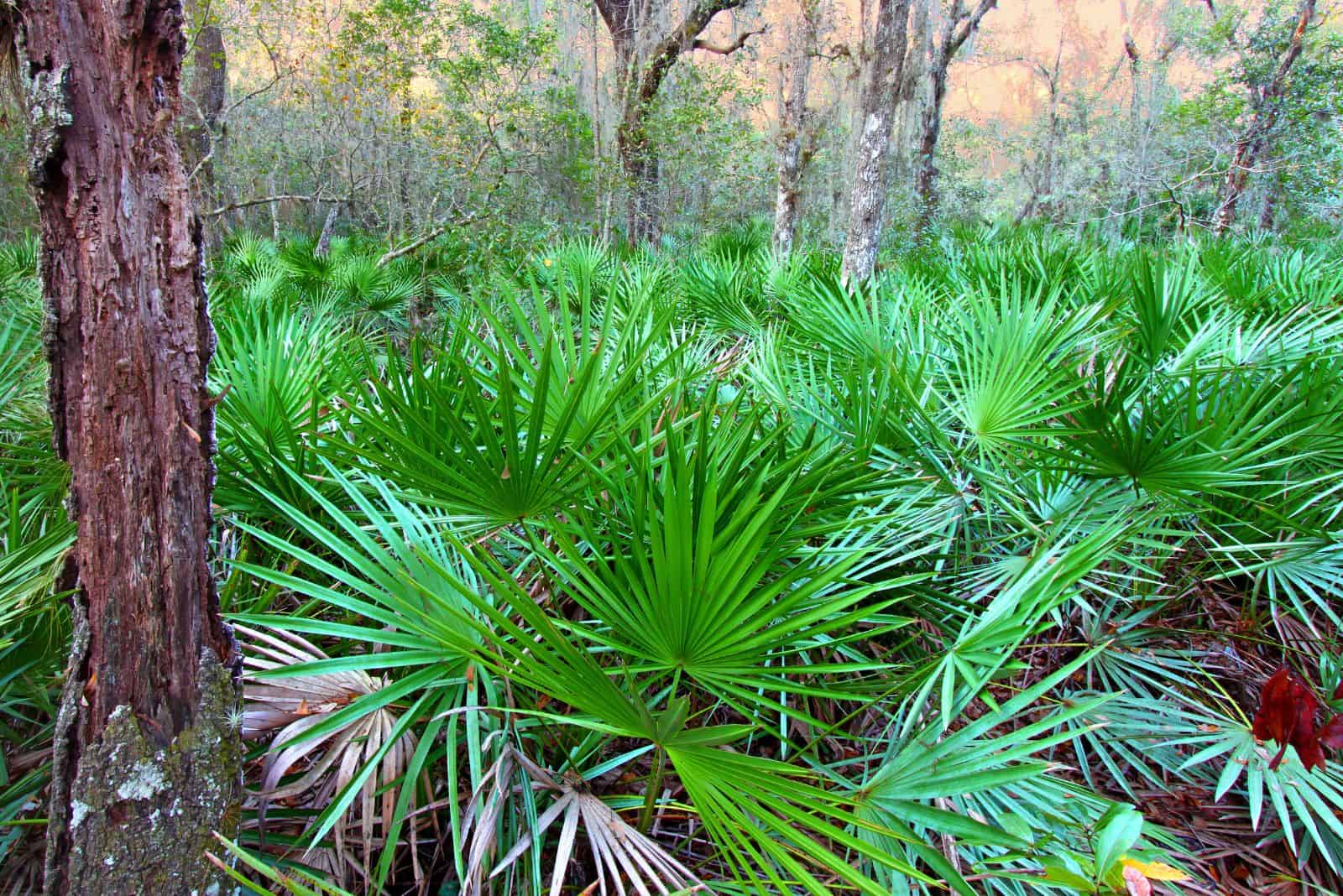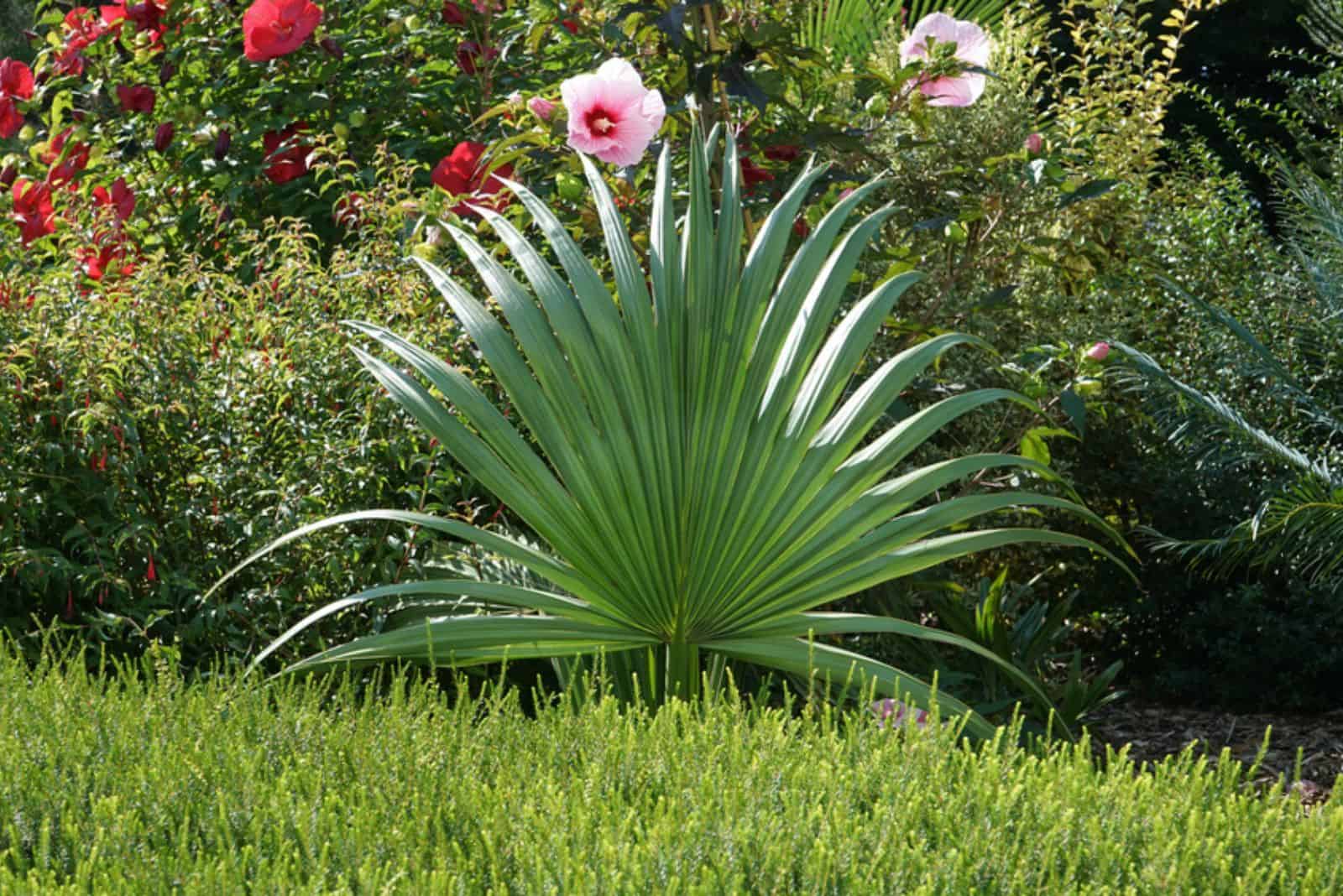We must be cautious when planting trees in our outdoor gardens. This mainly refers to the type of trees we should grow based on their hardiness.
Palm trees are always an excellent choice for gardens due to their low care requirements and stunning appearance.
If you live in warmer parts of North Carolina and are looking for a palm to grow, you are in the right place to find the answer.
In this article, I’ll show you some amazing North Carolina Palm Trees, their features, and their specific care requirements.
Let’s get started!
North Carolina Palm Trees
Before you read this list of palms, first research the USDA growing zone of your area. For instance, if you live in Fayetteville, your USDA zone is 7b, and if you live in Wilmington, you can grow palms that are hardy in USDA zone 8a and above.
Don’t worry; you’ll find out more about the cold hardiness of each palm listed below.
Some of the best palm trees to grow in this region include:
• Cabbage palm
• Canary Island date palm
• California fan palm
• Mazari palm
• Needle palm
Let’s get into details!
Cabbage Palm (Sabal Palmetto)
The Sabal palmetto, commonly referred to as the Cabbage palm, is a remarkable palm species native to America.
Here is some basic info about the Sabal palmetto.
[table id=610 /]
The magnificent Cabbage palm can reach 90 feet tall in its natural environment, but it won’t reach that size when cultivated in outdoor gardens.
It can grow up to 60 feet tall in gardens, which is still pretty tall!
This palm species produces broad trunks and the top is covered with unique elongated fronds. A few Sabal palms planted together can offer some shade, despite the fact that they are not typically thought of as ideal shade trees.
Living in USDA hardiness zones 8b and above allows you to grow Sabal palms without problems. The lowest temperature these palms can withstand is 11 degrees Fahrenheit.
Canary Island Date Palm (Phoenix Canariensis)
The Canary Island date palm is the type of palm I think of first when someone mentions these plants. Their unique appearance and cold hardiness has made them famous worldwide.
Here’s some basic info about the Phoenix canariensis palm.
[table id=611 /]
If you are a beginner gardener, I don’t recommend growing this specimen as your first palm. It can be pretty fussy over growing conditions.
The Pineapple palm typically reaches 65 feet tall and needs a lot of space to spread, so it’s not suitable for smaller outdoor gardens.
This is a slow-growing specimen that may take 15 years to reach just 10 feet tall.
The Canary Island date palm produces lovely white to gray flowers that give way to colorful, decorative fruits that resemble dates.
The Pineapple palm grows best in zones 8b and above. It thrives in full sun and loves water, especially in the first years of growth. It also likes a lot of food, so you’ll need to fertilize it every spring for the best results.
Don’t confuse palm trees with coconut trees!
California Fan Palm (Washingtonia Filifera)
If you live in USDA zone 8a and up and are looking for a low-maintenance palm, then the stunning California fan palm, or just California palm, is a perfect choice.
Here’s some basic info about the California fan palm.
[table id=612 /]
The Desert fan palm is a cold-hardy specimen frequently seen in backyards in warmer regions of America.
Its broad fronds resemble fans, which gives this palm a royal look. This palm species can reach up to 80 feet tall, and a single frond on an established tree may measure up to 6 feet wide.
I recommend planting this cold hardy palm in full sun and ensuring fertile and well-draining soil.
The nickname “Desert fan palm” gives you a hint of the water requirements of this palm. You’ll only need to water it until it’s well-established.
Mazari Palm (Nannorrhops Ritchiana)
The Nannorrhops ritchiana, commonly referred to as Mazari palm, is becoming increasingly popular lately due to its extraordinary appearance and sturdiness.
Here’s some basic info about the Mazari palm.
[table id=613 /]
This specimen has a very slow growth rate, so you’ll need to be patient until your Mazari palm reaches its full size, which is typically 20 feet.
The leaves usually come in green; however, there are also silver and extremely pale variants.
This palm is perfect for zones 8a and above and may last pretty long even if the conditions aren’t ideal.
The Mazari palm isn’t fussy about the conditions and will flourish in various soil types.
Needle Palm (Rhapidophyllum Hystrix)
Another North Carolina palm tree I would like to tell you more about is the breathtaking Needle palm!
Let’s start with some basic info about this type of palm.
[table id=614 /]
The Rhapidophyllum hystrix is another palm native to America. It can adapt to various soil types and tolerate partial shade.
This type of plant is suitable for cultivation in USDA zones 8a and above.
It’s a slow-grower, but the fact that it doesn’t require maintenance after establishment makes it perfect for every backyard.
The essential thing to consider prior to planting is the space; a mature Needle palm covers an area of approximately 6×6 feet.
Of course, you need to pay attention to the sharp needles, so don’t forget to warn visitors!
Mexican Fan Palm Tree (Washingtonia Robusta)
If you love the appearance of fan palms, then I have one more option for you; a lovely palm specimen known as the Mexican fan palm tree.
Let’s start with some basic info.
[table id=615 /]
The great thing about this type of palm is that it can be easily grown indoors. The main reason for this is the tree’s ability to adapt to various growing conditions.
If you live in USDA zones 8a through 11, then look no further than the Washingtonia robusta. It will adorn your backyard and thrive even with a bit of neglect.
This palm develops magnificent clusters of creamy blossoms and recognizable black fruit.
Unlike most other palm species, the Mexican fan palm has a fast growth rate. Believe it or not, this specimen can reach 100 feet tall!
There’s one drawback of this tree; if you live in Florida or California, you need to be careful as this specimen is considered invasive in these areas.
Pindo Palm Tree (Butia Capitata)
Now, I would like to tell you more about a perfect tree for North Carolina that has the cutest name ever; meet the Pindo palm, a magnificent specimen often found under the name Jelly palm.
Here’s some basic info about Butia capitata.
[table id=616 /]
The Pindo palm is a hardy perennial suitable for cultivation in relatively cool areas. When compared to other palms, this specimen isn’t that large and won’t exceed 20 feet tall.
There’s no need to worry about the growth of this palm if you plant it in partial shade. If you have a sunny spot, you can also plant it there.
Additionally, this specimen isn’t picky about the type of growing medium. Just make sure it’s well-draining, and you’re good to go!
When purchasing this palm, I highly recommend buying Pindo palms that are at least three years old because they grow really slowly and you’ll need to wait a long time until they’re established.
But if you’re a patient person, it’s worth waiting for those first pinnate fronds!
One more thing; jelly made of Pindo palm fruit is delicious!
Sago Palm Tree (Cycas Revoluta)
Even though the Cycas revoulta is referred to as the Sago palm, it isn’t really a palm species. For beginner gardeners, it may be confusing as the tree looks just like a palm.
Well, this is actually a cycad, but it will definitely make a great addition to your backyard, just like ‘true palms’.
Here’s some basic info about the lovely Sago palm.
[table id=617 /]
If your backyard lacks space for an enormous palm specimen, then the Sago palm is an excellent choice.
It rarely exceeds 10 feet tall, and due to its ability to adapt to various conditions, it’s commonly grown as a houseplant.
This tree hates wet soil, so you’ll need to go with specific soil types for palm trees.
You won’t have to worry about the health of this tree from the Cycas genus even if the temperature drops to 10 degrees Fahrenheit.
This tree doesn’t produce blossoms or fruits; its foliage looks perfect, and blossoms or fruits aren’t really necessary.
If you decide to grow this Cycas plant, make sure small children or pets don’t ingest any of the plant parts because it’s toxic and consumption could cause severe issues.
European Fan Palm (Chamaerops Humilis)
European fan palms, aka Mediterranean dwarf palms, are a pretty common sight in backyards nowadays. Honestly, I don’t know why these plants weren’t popular in the past; I mean, they look truly amazing!
Here’s some basic info!
[table id=618 /]
Interestingly, you can grow this fan palm as either a tiny tree with one trunk or a shrub with several trunks.
Its lovely fronds resemble fans and can reach up to 2 feet. Profusions of vivid yellow blossoms appear in the springtime. Sometimes you can’t notice the blossoms as they’re obscured by the leaf stems.
After the flowering stage ends, the tree produces rounded, inedible fruits that come in orange, yellow, or brown.
This specimen is cold-hardy and enjoys full sun. Partial shade typically doesn’t affect its growth, but too much shade can lead to legginess.
Windmill Palm Tree (Trachycarpus Fortunei)
The award-winning Windmill palm is widely cultivated due to hardiness and low care requirements,
Here’s some basic info about this species.
[table id=619 /]
The leaves of this palm resemble fans and typically reach 3 feet. Now you know where the name Windmill palm comes from!
This tree loves partial shade, but it tolerates full sun in colder regions, which makes it a perfect choice for North Carolina landscapes!
Another benefit of growing this tree in this area is that it typically doesn’t have pest issues.
You can feed your fortunei palm twice a year with slow-release fertilizer for best results.
True Date Palm (Phoenix Dactylifera)
The delicious dates on the True date palm made it one of the most famous trees in general. If we add drought tolerance, cold hardiness, and its ability to adapt to various soil mixes, these trees are perfect for growing in North Carolina.
Let’s start with some basic info about this palm.
[table id=620 /]
The Jewel palm can reach 75 feet tall, making it perfect for large backyards. This tree does grow slowly, but since its care requirements are low, this isn’t a disadvantage.
Both full sun and partial shade will promote growth, so just stay away from areas that are too shady in your backyard.
Regarding temperature tolerance, these palms will survive temperatures as low as 15 degrees Fahrenheit.
These woody perennials typically take about 8 years to produce fruit; patience will really pay off because this is definitely among the tastiest fruit available.
Miniature Chusan Palm Tree (Trachycarpus Wagnerianus)
The Miniature Chusan palm is commonly grown indoors, but did you know it’s a cold-hardy palm and can be successfully grown in USDA zones 8-10b?
Here’s some basic info about this palm tree.
[table id=621 /]
You would think that this palm is very small due to the term “Miniature” in its nickname. Well, it can actually reach 25 feet, which is actually far from small!
Green foliage, tiny yellow blossoms, and purplish black fruit add a tropical touch to every landscape.
If you live in North Carolina and enjoy a tropical feel, then the Miniature Chusan palm is a perfect choice.
The Trachycarpus wagnerianus tolerates temperatures as low as 10 degrees Fahrenheit and is really hard to kill. Just add fertilizer twice a year, but only during its active growth period. Make sure you use high-quality fertilizers suitable for palm trees.
Saw Palmetto Palm (Serenoa Repens)
If you are looking for a smaller palm, I recommend growing a Saw palmetto palm tree. You can use it to fill the space below taller trees or cover the ground.
Here’s some basic info about the Saw palmetto palm.
[table id=623 /]
This palm species can reach about 10 feet in both height and width. The tree develops many trunks and clumps of lovely fronds that resemble fans.
It also produces yellowish-white blossoms that smell amazing and give way to berries that have significant value for wildlife.
Once established, these palms are very hard to remove, so find a perfect spot to avoid having to transplant or remove the palm stumps.
This palm can withstand long periods of drought and grows perfectly well in cooler areas, starting from USDA zone 8a.
Dwarf Palmetto (Sabal Minor)
As the name suggests, the Dwarf palmetto is a miniature palm specimen from the Sabal genus.
Here’s some basic info.
[table id=624 /]
This type of palm typically doesn’t develop trunks; if it does, they are really short. It reaches 6 feet tall and the leaves may grow up to 3 feet.
Creamy white and scented blossoms give way to tiny, circular, deep brown fruits.
This type of palm isn’t sensitive to salts in the soil and can survive extended periods of drought.
I’ve seen it in many backyards in North Carolina grown as a foundation plant.
If you live in Raleigh, Asheville, or Winston-Salem, you can actually grow these palms outdoors, but you need to ensure winter protection.
FAQs
What is the average lifespan of a palm tree?
Palms live from 70 to 100 years on average, but some may last longer or shorter, depending on the species. For instance, the lifespan of some specimens of Date palms is around 200 years. On the other hand, the lifespan of some palms, such as the Areca palm (Dypsis lutescens), is around 40 years.
Do palm trees need full sun to grow?
Palms are big fans of full sun, but some varieties grow perfectly in partial shade. For example, the Pindo palm will grow well if exposed to full sun, and partial shade won’t inhibit its growth.
Wrapping Up
Outdoor gardening can be challenging in colder regions, especially if you like tropical landscapes. If you like palms, but live in North Carolina, I’m sure you are now thrilled to have found out that several palm species can thrive in this area.
If you are a novice gardener, you can cultivate almost all the North Carolina palm trees listed above.
If you are still worried that winter will kill your palms, ensure they get winter protection. With this method, you can grow many types of palm in colder regions.
Good luck, and until next time!

